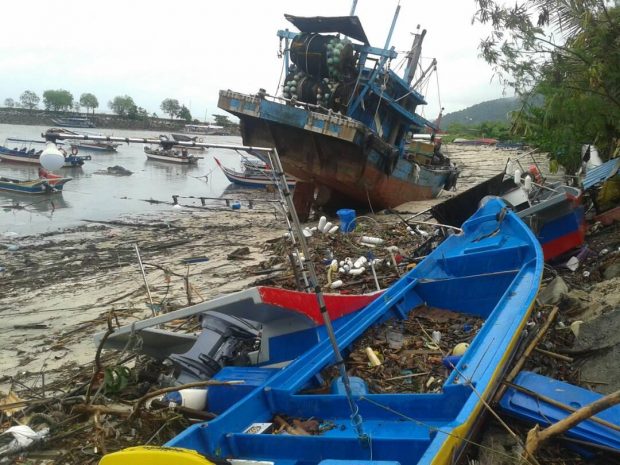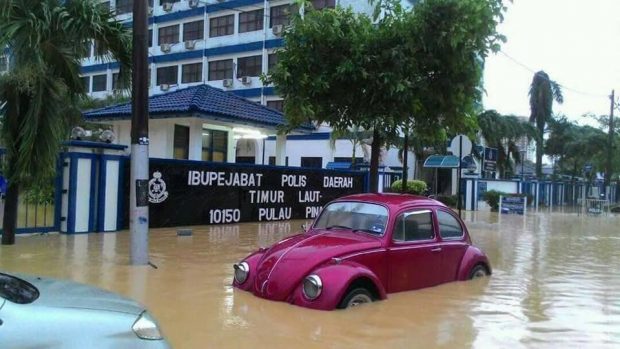
Penang floods: Human mistakes or nature’s fault?

The beautiful island of Penang, northwest of peninsular Malaysia, had become the focal point on October 21st when 11 workers were buried under a landslide that occurred at a housing project in Tanjung Bungah.
The massive construction sites located on the slopes of hills and near the lower parts of some highland areas in the island are said to have been an “invitation for disaster”.
This issue reached its climax on November 4th and 5th when seven people (mostly of golden age) were killed by a big flood that had swept the island, leaving much of Penang paralyzed. Those who died were either drowned or killed by trees that fell on them.

The flood was considered to be one of the worst in Penang history when the 17-hour non-stop rainfall flooded five districts of the region with its strong winds and downpour. The flood was soon followed by land erosions and countless trees falling due to weakened terrestrial foundation.
Penang’s flood it seen to have come from the meeting of the Damrey typhoon (that had hit Vietnam) and another smaller typhoon originating from the Gulf of Siam—in what is being named the Fujiwara phenomenon. The meeting of the typhoons is alleged to have caused continuous heavy rainfall and dangerous floods in nearby areas.

The Fujiwara phenomenon itself was a simple coincidence, nevertheless, it became a huge contributing factor to the floods that hit massive building constructions around Penang.
Recently, Prime Minister Datuk Seri Najib Tun Razak said that the federal government was ready to consider giving additional funds of 1 billion RM to support the implementation of flood embankment projects in Penang.
The government of Kelantan, under the opposition party Parti Islam Se-Malaysia (PAS) also announced to contribute 50,000 RM and also send volunteers to help flood victims on site.
Before the flood incident, Lim Gaun Eng, Chief Minister of Penang who is also the Sectary-General of the Democratic Action Party (DAP), is reported in 2015 to have accused the Kelantan government under PAS for negligence right around the time the flood hit vulnerable regions (at the time, 2014).
When Penang was hit by the big flood on 4th-5th November, Lim Guan Eng was forced to ask for help and aid from the Federal Government to facilitate and manage the flood situation in Penang.
Before the flood, groups of non-governmental organizations (NGOs) in Penang had raised concerns of extensive construction sites on hilltops and steep areas—all susceptible to mass damage that could cause flash floods that are frequent in the area.
Records have shown that around 119 flash floods occurred in Penang since 2013 to October of this year. On average, there are approximately 20 flash floods each year, proving that the state had serious environmental problems that were due to actions by the people in Penang; man-made disasters.
In another development, the environmental NGO, Sahabat Alam Malaysia (SAM) or Natures Friend Malaysia urged the government of Penang to immediately stop all developmental projects at the hill slopes including projects that had already received permission for future construction and those projects that reached under 76 meters above sea level.
Earlier on, Prime Minister Razak had visited flood victims and then requested the DAP government of Penang to closely monitor all housing projects set on hills that have been approved and urged developers not to accept projects solely on the potential of profit-making.

by: Norila Daud from Malaysia World News (Senior Vice President of AJA)






